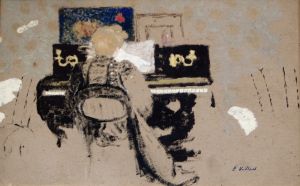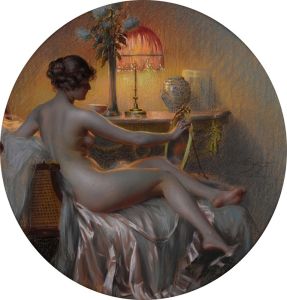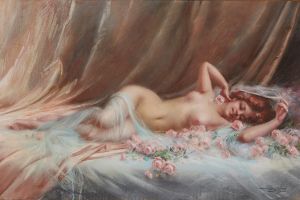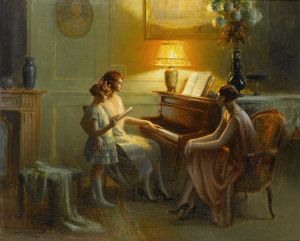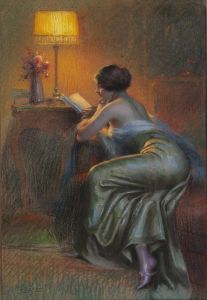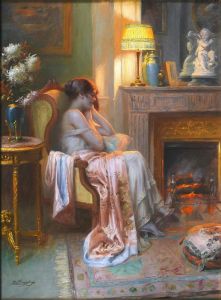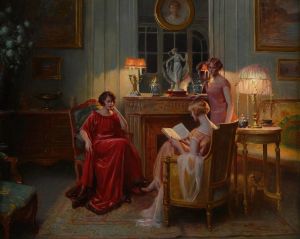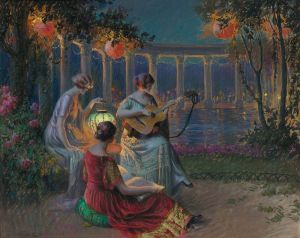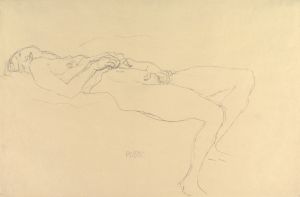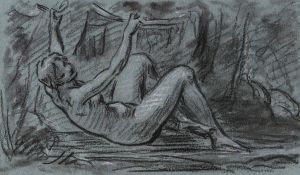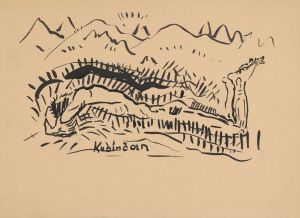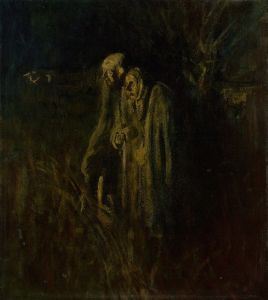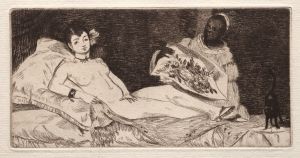
Odalisque
A hand-painted replica of Delphin Enjolras’s masterpiece Odalisque, meticulously crafted by professional artists to capture the true essence of the original. Each piece is created with museum-quality canvas and rare mineral pigments, carefully painted by experienced artists with delicate brushstrokes and rich, layered colors to perfectly recreate the texture of the original artwork. Unlike machine-printed reproductions, this hand-painted version brings the painting to life, infused with the artist’s emotions and skill in every stroke. Whether for personal collection or home decoration, it instantly elevates the artistic atmosphere of any space.
Delphin Enjolras (1857–1945) was a French academic painter known for his depictions of women in intimate, domestic settings, often illuminated by soft, glowing light. One of his notable works is Odalisque, a painting that reflects his characteristic style and thematic focus. Enjolras specialized in portraying women in moments of quiet reflection, often surrounded by luxurious fabrics, warm lighting, and elegant interiors.
The term "odalisque" historically refers to a female attendant or concubine in an Ottoman harem, and it became a popular subject in 19th-century European art, particularly within the Orientalist movement. While Enjolras was not primarily an Orientalist painter, his Odalisque adopts the title and some stylistic elements associated with the genre. The painting features a reclining female figure, draped in flowing fabrics, exuding a sense of sensuality and grace. True to Enjolras' artistic approach, the scene is bathed in soft, diffused light, which enhances the textures of the fabrics and the subject's skin tones.
Enjolras was trained at the École de Dessin de la Ville de Paris and later studied under prominent artists such as Jean-Léon Gérôme and Pascal Dagnan-Bouveret. His works often blend academic precision with a romanticized portrayal of femininity. While many of his paintings focus on women reading, sewing, or engaging in other quiet activities, Odalisque stands out as a more explicitly sensual piece, aligning with the broader artistic fascination with exoticism during the period.
The exact date of Odalisque is not widely documented, but it is consistent with Enjolras' mature style, which flourished in the late 19th and early 20th centuries. The painting exemplifies his mastery of light and shadow, as well as his ability to create an intimate atmosphere. Unlike the more overtly exotic and dramatic interpretations of odalisques by artists such as Jean-Auguste-Dominique Ingres or Eugène Delacroix, Enjolras' approach is more subdued and focused on the interplay of light and texture.
Enjolras' Odalisque is part of a broader tradition of European artists reinterpreting the concept of the odalisque, often as a pretext for exploring themes of beauty, sensuality, and the female form. However, Enjolras' work is distinct in its emphasis on domesticity and the soft, luminous quality of his compositions. Today, his paintings, including Odalisque, are appreciated for their technical skill and their ability to capture the quiet elegance of their subjects.





